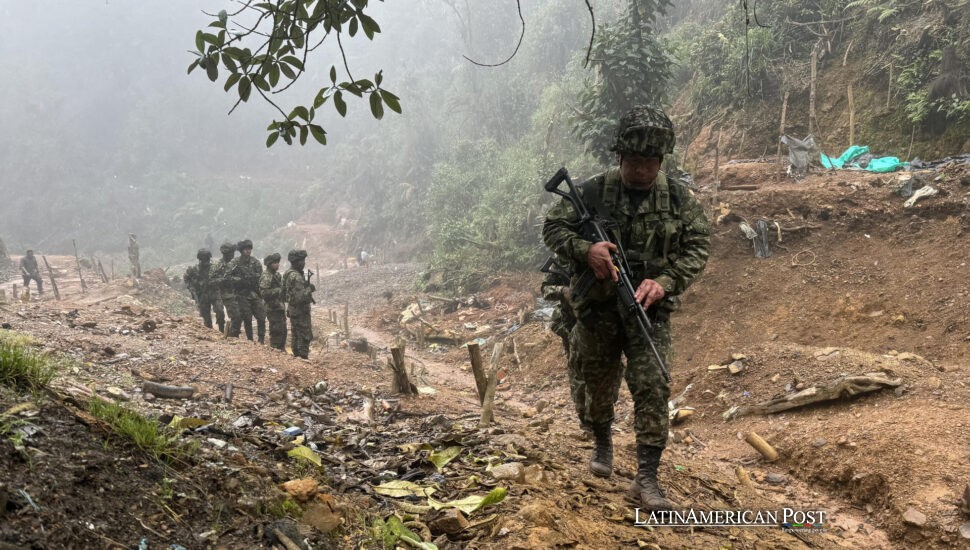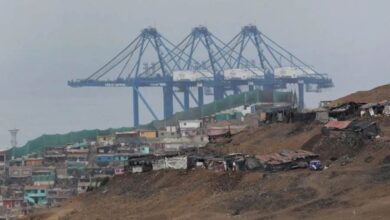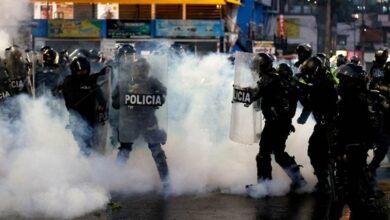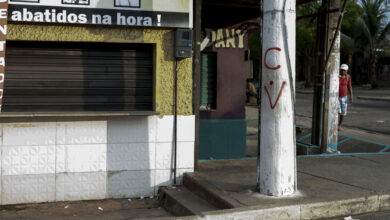Ecuadorian Gangs Join Colombian Rebels to Expand Illicit Control

Eleven Ecuadorian soldiers killed in an Amazon ambush marked a brutal turning point. Once a mere transit zone, Ecuador now stands fully embroiled in conflict, entwined with Colombian guerrillas and facing a new era of shared power among heavily armed groups.
A Rising Tide of Violence
The killing of eleven Ecuadorian soldiers in the Amazon signaled that the country is no longer just a bystander or corridor for Colombian guerrillas. Instead, Ecuador has become a battlefield in its own right, where local gangs and guerrilla dissidents from Colombia forge alliances. The groups possess drug routes and profitable unlawful businesses, from trading to resource extraction. They are also becoming more settled in areas where the Ecuadorian state has difficulty maintaining control.
During prior times, isolated conflicts mainly occurred near Colombia’s unstable borders. The increase in Ecuador now shows a distinct change. In January 2024, President Daniel Noboa declared a “domestic armed conflict,” aiming to legitimize the use of military force against these powerful criminal structures. He grouped both local gangs—like Los Lobos and Los Tiguerones—and Colombian rebel offshoots, such as the Frente Oliver Sinisterra and the Comandos de Frontera, under the umbrella of “irregular armed groups.” The text takes this language from the Colombian conflict vocabulary of decades ago. It emphasizes that the entities have sufficient power, weapons, and structure to compete with government power.
FARC Dissidents and the Amazonian Battleground
The current wave of violence has deep roots in Colombia’s tumultuous past. In 2016, the Revolutionary Armed Forces of Colombia (FARC) signed peace accords, but not all factions laid down arms. One significant remnant, the Frente Oliver Sinisterra, took control of territories like Tumaco on the Colombian side of the border—a region notorious for prolific coca cultivation. Their operations soon bled into Ecuador, culminating in the 2018 abduction and murder of a team of journalists from the Ecuadorian newspaper El Comercio in the Mataje area of Esmeraldas Province.
Although the dissident leader behind that attack, Walter Patricio Arizala (known as “Guacho”), was killed later that year by Colombian forces, the group’s presence did not vanish. In 2024, Ecuadorian authorities arrested Carlos Arturo Landázuri, alias “Comandante Gringo,” in Ibarra. Another member was convicted of drug trafficking. Investigations reveal that these dissidents have infiltrated strategic Amazonian zones—particularly Alto Punino near the Colombian border—where they conduct large-scale illegal mining, employing high-caliber rifles and even grenade launchers.
This militarized approach shows their tactics change. Instead of only hiding, the groups now develop safe areas. The groups cooperate with the Ecuadorian people. Those people give local knowledge and supply help. Military people say the weaponry seized during raids includes advanced ordnance. This confirms a new level of planning and a readiness to fight openly.
Shared Routes and Cross-Border Alliances
The transformation in Ecuador’s security situation was inevitable from the Colombian perspective. Analysts like Professor Luis Fernando Trejos of the Universidad del Norte in Barranquilla argue that Ecuador has graduated from a “logistical hideout” to an “operational platform.” One prime example is the Comandos de Frontera, initially formed in 2019 under the Coordinadora Nacional Ejército Bolivariano (CNEB), a FARC dissident network.
As these guerrilla splinters expanded from Putumayo in Colombia into the Ecuadorian Amazon, they struck deals with local gangs such as Los Lobos. Their shared aim was to secure narcotics corridors, control illegal mines, and extend their financial base. Unlike the large-scale recruitment of Venezuelans by the ELN in some regions, there is so far less evidence of mass Ecuadorian enlistment. Nevertheless, the synergy between Ecuadorian and Colombian criminals remains dynamic and far-reaching.
According to Trejos, each ceasefire negotiated between the Colombian government and dissident groups may enable these factions to consolidate their finances rather than focus on fighting state forces. “They’re no longer seeking confrontation with Bogotá,” he says. “They’re prioritizing expansion and competition with other illegal players in cocaine and gold economies.”
Diplomatic Strains and Military Options
The increase in violence occurred during complex relations between the governments of Daniel Noboa of Ecuador and Gustavo Petro of Colombia. In addition, Petro did not publicly congratulate Noboa after the election victory, which increased the tensions. While a complete diplomatic rift seems unlikely, observers point out that a new cross-border crisis—akin to the 2008 Angostura incident, where Colombian troops struck a FARC camp inside Ecuador—could undermine any remaining goodwill.
Even if Bogotá intensified strikes against the Comandos de Frontera on Colombian soil, such action would not guarantee an end to their cross-border movement. As previous conflicts have shown, guerrillas often slip into neighboring countries, exploiting geographic complexities and weak oversight to evade capture. Ecuadorian officials can no longer assume a conflict next door will remain neatly contained behind territorial lines.
Ecuador’s legal system, meanwhile, is increasingly engaged in prosecuting alleged members of these border-hopping syndicates. Thirteen suspects face charges for running a drug-trafficking ring with shipments reportedly heading to Mexico and Spain. Yet the challenge stretches beyond the courtroom: many criminals operate in remote areas with minimal state presence, commanding local allegiances through coercion and financial incentives.
Toward a New Transnational Conflict
What was once dismissed as a lingering remnant of the Colombian conflict has evolved into a transnational mosaic of criminal organizations. FARC dissidents, no longer fighting for ideological objectives, are now entrenched in wide-ranging illicit economies. The Colombian state remains preoccupied with a patchwork of ceasefires while Ecuador scrambles to adapt to an unprecedented security threat.
In the jungles and clandestine camps of the borderlands, lines between rebel fighters and gang members blur. In strategic ports, alliances brokered between Ecuadorian and Colombian bosses control everything from cocaine trafficking to illegal gold extraction. The absence of a formal war declaration does little to slow the creeping reality of armed conflict.
Also Read: Haiti’s Voodoo Reclaims Center Stage in National Turmoil
In remote Amazon settlements, bullets travel. Contraband shipments move through major seaports. Ecuador’s unstable state is clear. The growth of criminal groups from the Colombian border is a warning. The previous conflict boundaries changed. New partnerships develop rules. The outcomes are often deadly for civilians and service members. How either state will contain a threat that transcends borders remains unclear, but for now, both governments find themselves in a struggle that neither can confront alone.





